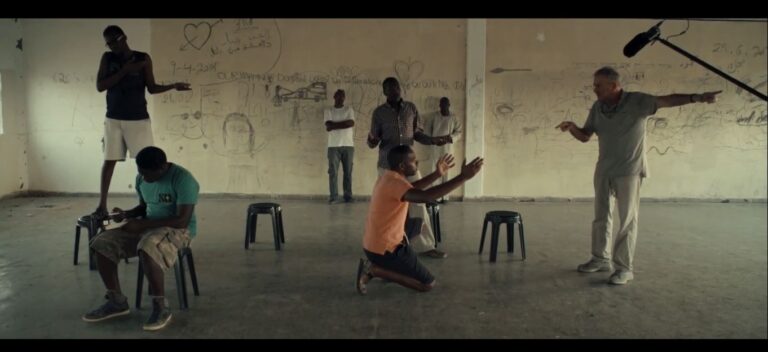Much of the rhetoric around racism and racialized discrimination in Israel centers on Israeli Jewish treatment of Palestinians. However, an examination of the experience of Mizrahi Jews can also be instructive as to the ways that racism and white supremacy function within Israel—through a privileging of Ashkenazi Jews, whose experiences are used to define the contemporary Israeli Jewish experience. For example, Israeli Jewish artist of Yemeni descent Leor Grady’s work addresses the marginalization, erasure, and exile of Yemeni Mizrahi Jews in Israel. In his video work Eye and Heart, Grady highlights how, in its absorption into Israeli folk dance, traditional Yemeni dance has been uprooted from its site of origination and “whitewashed.” Through a discussion of this work and others alongside which it was shown in the exhibition Natural Worker, I argue that Grady’s articulation of the co-option of Yemeni culture by the dominant Ashkenazi (white) Israeli mainstream demonstrates how racialization plays out in the cultural realm of Israel. This method of privileging whiteness can be seen in the Israeli co-option of other Mizrahi and Palestinian cultural elements, such as couscous, hummus, and Arabic words such as “yalla.” This examination of Grady’s work allows for an understanding of how this privileging of whiteness functions within the Jewish Israeli context.
Keyword: Israel
Black Skin, White Cameras: African Asylum-Seekers in Israeli Documentary Film
The recent arrival in Israel of thousands of refugees from countries like Eritrea, Ethiopia, and Sudan has triggered a spate of hate crimes and mob violence. Asked about these asylum seekers in 2012, Likud-party member Miri Regev called them a “cancer.” For this comment, she later apologized—not to the African asylum-seekers but to Israeli cancer survivors, and she expressed regret for comparing them to Africans. Around that same time, Interior Minister Eli Yishai of the Shas Party told a reporter that “this country belongs to us, to the white man.” Continuing on, he stated that he would use “all the tools [necessary] to expel the foreigners, until not one infiltrator remains.” While the racial dynamics of Israel have been thoroughly examined with respect to both intra-Jewish tensions (Ashkenazi supremacy) and the Palestinian issue (white settler-colonialism), in this essay, I want to theorize Israeli whiteness with respect to the African refugees. Specifically, I will examine two recent Israeli documentaries dealing with African refugees—Hotline (dir. Silvina Landsmann, 2015) and Between Fences (dir. Avi Mograbi, 2016). Both openly demonstrate solidarity with the African asylum-seekers, but they do so in different ways, and if the former film leaves the racial hierarchies of Zionism intact, the latter works to shatter them.

